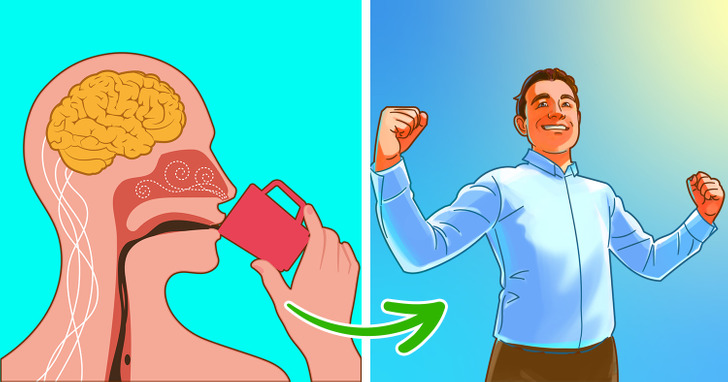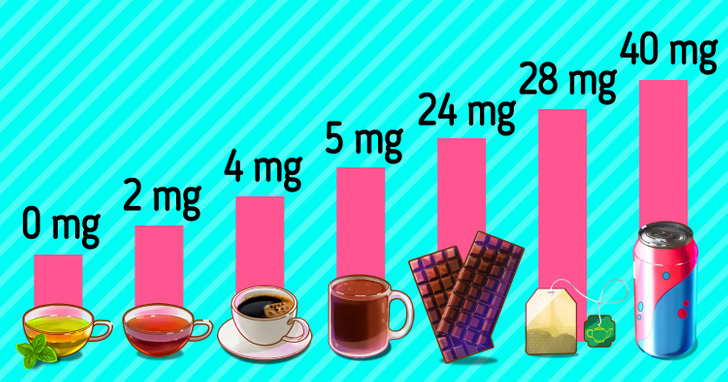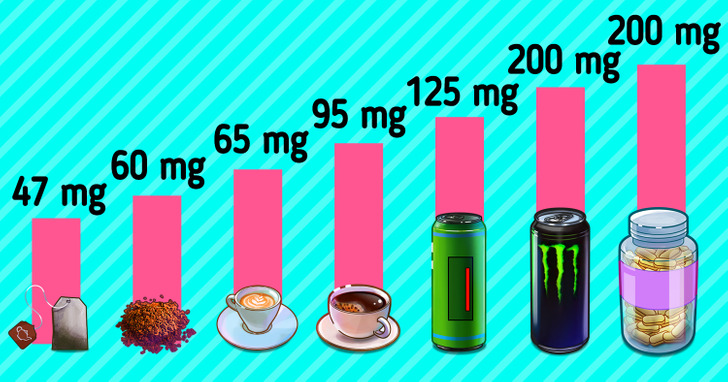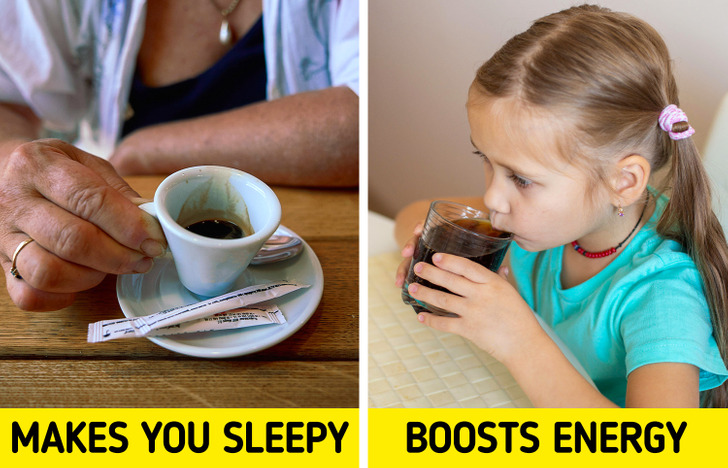How Much Caffeine Different Products Contain
Billions of people worldwide rely on caffeine daily to help them stay awake and agile thought the day. 5-Minute Crafts will reveal to you, in this article, how much caffeine different products contain.
1. What caffeine actually is

Caffeine is a natural stimulant, and it’s found in over 60 plant species. Most commonly, it’s enjoyed across the globe in coffee, tea, and chocolate. In its pure form, it is a white, odorless powder with a slightly bitter taste. Caffeine works by stimulating the brain and central nervous system, keeping you awake. When consumed from the gut, it enters the blood system very quickly. From there, it goes to the liver and breaks down into compounds that can affect the function of various organs. Additionally, all this stimulates the brain and contributes to the state of arousal, alertness, and focus.
2. Caffeine in different types of products

Caffeine is found in nature in the fruit, leaves, and beans of coffee, cacao, and guarana plants. It is also added to some drinks and supplements.
- Herbal tea — contains none
- Decaffeinated tea — contains 2 mg
- Decaffeinated coffee — contains about 4 mg of caffeine
- Hot chocolate — The exact amount of caffeine in hot chocolate depends on how the drink is made. The average cup of hot chocolate has only 5 mg of caffeine. A very chocolatey hot chocolate mix that some companies use contains up to 25 mg of caffeine.
- Chocolate (cacao) — 1 oz (28 g) of dark chocolate contains about 24 mg of caffeine, whereas milk chocolate contains one-quarter of that amount.
- Green tea — contains about 28 mg
- Soda — a 12-oz (355 ml) can of regular or diet dark cola contains about 40 mg of caffeine.

- Black tea — 1 cup (237 ml) contains about 47 mg of caffeine.
- Instant coffee — 1 cup or 8 oz (237 ml) contains about 60 mg of caffeine.
- Espresso — 1 shot or 1.5 oz (44 ml) contains about 65 mg of caffeine.
- Brewed coffee — 1 cup or 8 oz (237 ml) contains about 95 mg of caffeine.
- Guarana — This seed originates from South America, and it is used as an extract in food, energy drinks, and energy supplements. Coffee beans have about 4 times less caffeine than guarana beans. Some drinks that contain guarana extract can have up to 125 mg of caffeine per serving.
- Energy drinks — 1 cup or 8 oz (237 ml) of an energy drink holds about 85 mg of caffeine. But the standard energy drink serving is 16 oz (473 ml), and that doubles the caffeine to 170 mg. Because energy shots are more concentrated than drinks, a small 2-oz (59ml) shot holds about 200 mg of caffeine.
- Supplements — Caffeine supplements contain about 200 mg per tablet as if you had drunk 2 cups (473 ml) of brewed coffee.
Sometimes the caffeine in coffee can make you feel tired. There are several reasons for that. For example, caffeine can block some receptors in the brain that, as a result, can cause sleepiness. Also, some people develop a tolerance for caffeine so, at some point, coffee can’t really wake them up anymore.
Soda, which can also contain caffeine, usually has a lot of sugar and carbs. Because of that, it works in another way. Simple carbs in it can be immediately absorbed into your bloodstream, which can quickly boost your energy. But shortly after that, the level of sugar in your blood returns to normal and you might feel sluggish and tired again.
